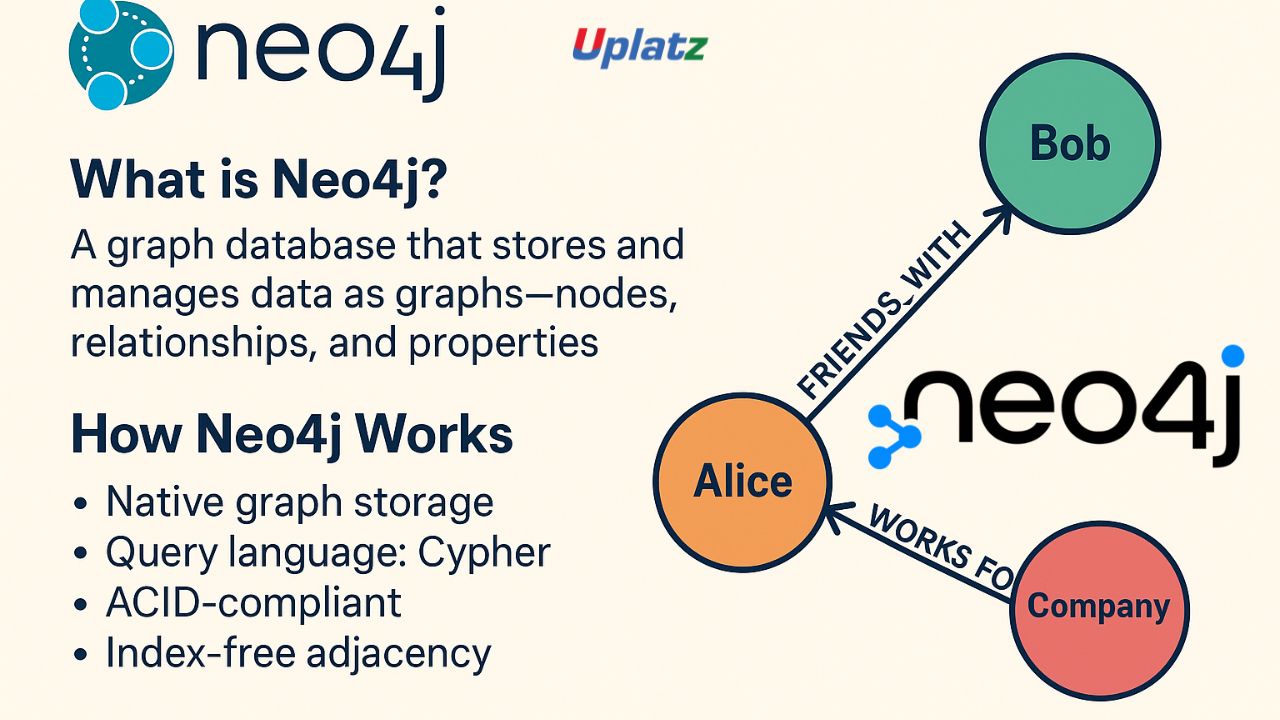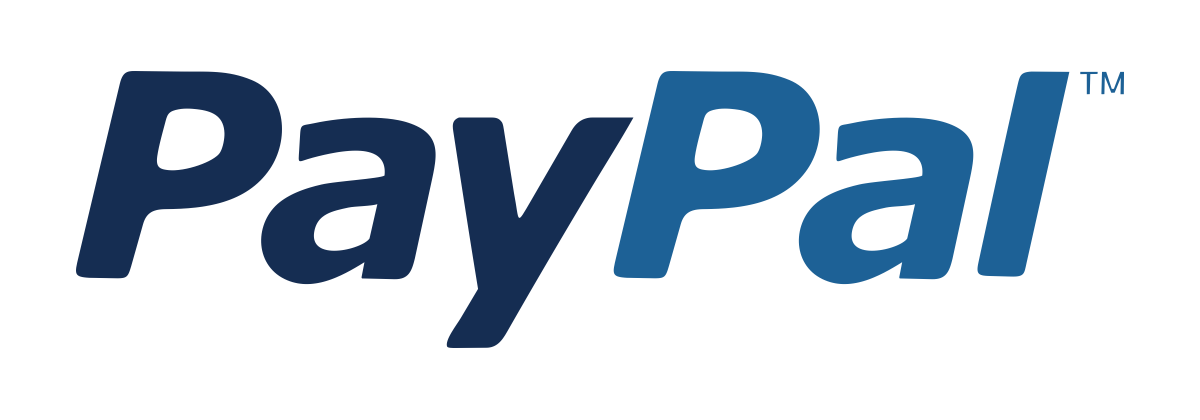RedisGraph
Master RedisGraph from scratch and learn to build high-performance, real-time graph applications using Cypher and Redis with practical deployment.
Course Duration: 10 Hours
Preview RedisGraph course
Price Match Guarantee Full Lifetime Access Access on any Device Technical Support Secure Checkout Course Completion Certificate 91% Started a new career
BUY THIS COURSE (
91% Started a new career
BUY THIS COURSE (GBP 12 GBP 29 )-
 84% Got a pay increase and promotion
84% Got a pay increase and promotion
Trending
Cutting-edge
Job-oriented
Coming soon (2026)
Students also bought -
-

- Neo4j
- 10 Hours
- GBP 12
- 10 Learners
-

- TigerGraph
- 10 Hours
- GBP 12
- 10 Learners
-

- MongoDB Administration
- 5 Hours
- GBP 12
- 17 Learners

RedisGraph Online Course
RedisGraph: Master Graph Databases and Cypher Query Language is a comprehensive, self-paced online course meticulously designed to equip aspiring data professionals, data scientists, software engineers, and tech enthusiasts with the indispensable skills needed to navigate and master the powerful RedisGraph database system. This course transforms beginners into proficient practitioners, capable of utilizing RedisGraph for a wide array of high-performance, real-time data analytics, immediate decision-making, and complex relationship analysis tasks, from real-time recommendation engines to fraud detection, network topology mapping, and session-based analytics. Whether you are taking your first steps into the intricate world of graph databases or looking to significantly enhance your existing skill set with a blazing-fast, in-memory graph solution, this course offers an unparalleled foundation, extensive practical experience, and precise, step-by-step guidance for building and deploying real-world graph solutions.
At its core, RedisGraph is a blazing-fast, in-memory graph database module for Redis, designed for lightning-speed query execution on connected data. Unlike traditional disk-based graph databases or even other in-memory solutions, RedisGraph leverages a revolutionary approach by representing graphs as sparse adjacency matrices and employing GraphBLAS (Graph Basic Linear Algebra Subprograms) for graph processing. This unique architecture allows RedisGraph to achieve unparalleled performance for graph traversals and aggregations, often executing complex queries in milliseconds on datasets that would bog down other systems. Its tight integration with Redis, a widely adopted in-memory data store, gives it the advantage of Redis's simplicity, speed, and versatility, making it ideal for applications that demand real-time insights and low-latency responses. This course capitalizes on these advantages by starting with the fundamentals of graph theory and Redis, steadily progressing to more advanced RedisGraph-specific tools, data modeling, and query optimization techniques, all while maintaining an engaging, project-driven learning curve. This approach ensures that every concept learned is immediately applicable and reinforces a practical understanding of how real-world, high-performance graph solutions are designed and deployed.
Through an in-depth, hands-on approach, this course covers everything necessary to become proficient in RedisGraph and its associated ecosystem. You will begin with the fundamentals – setting up your Redis and RedisGraph environment (local, Docker, and cloud-based), understanding graph schema design, and basic Cypher commands for data manipulation. As you progress, you will delve into advanced Cypher querying for complex pattern matching, aggregations, and sub-queries, explore data loading strategies, implement real-time analytics, and learn about integrating RedisGraph with various applications using Redis clients. Each module is designed to provide practical experience with redis-cli, RedisInsight, and programmatically interacting with RedisGraph from popular programming languages. By the end of this course, you will not only be familiar with these tools but will also understand the underlying principles of in-memory graph data modeling and high-performance analytics, enabling you to apply your knowledge to demanding real-world scenarios.
The unique aspect of this course lies in its focus on performance-critical, real-time graph applications. We don't just teach you how to use a tool; we teach you why and when to use RedisGraph to solve problems that demand extreme speed. You will work through numerous simulated scenarios, ranging from building a real-time recommendation engine that responds in milliseconds to detecting fraudulent transactions as they occur, and analyzing live network data for immediate insights, all in a controlled lab environment. This hands-on experience is crucial for developing the critical thinking and problem-solving skills essential for a successful career in data science, real-time analytics, and backend engineering. Furthermore, the course emphasizes understanding the performance implications of different graph designs and Cypher query patterns in an in-memory context, promoting the development of highly efficient and low-latency solutions.
You will gain a deep understanding of graph theory, common graph algorithms (like Shortest Path, Breadth-First Search, and basic centrality measures), and how to implement them efficiently in RedisGraph using Cypher. The curriculum is meticulously crafted to ensure that you gain proficiency in crucial areas such as real-time analytics, rapid data ingestion, and deploying RedisGraph for production use. Beyond the technical aspects, the course also touches upon architectural considerations for integrating RedisGraph into existing data pipelines and microservices architectures, leveraging its strengths as a fast, operational data store.
By the end of the course, you will have built multiple real-world projects and conducted comprehensive simulated graph database implementations. These aren't just exercises; they are portfolio-ready engagements that showcase your ability to design, implement, and query complex graph datasets using RedisGraph. You will learn how to:
- Set up and configure your Redis and RedisGraph environment securely for development and production.
- Design optimal graph schemas to represent complex relationships and data for high performance.
- Master the Cypher Query Language for all aspects of graph data manipulation and real-time analysis within RedisGraph.
- Perform lightning-fast deep link analytics to uncover hidden patterns and insights within interconnected data.
- Implement common graph algorithms (e.g., shortest path, BFS) efficiently within RedisGraph's in-memory model.
- Develop real-time analytics solutions for immediate decision-making and operational use cases.
- Efficiently load and manage large datasets within RedisGraph's memory constraints.
- Integrate RedisGraph with external applications using standard Redis clients and the GRAPH.QUERY command.
- Optimize Cypher queries and graph schema designs for maximum performance and memory efficiency.
- Generate meaningful insights from graph data to solve real-world business problems requiring low latency.
This course goes beyond simply teaching you the tools; it helps you understand the entire lifecycle of a high-performance graph database project and how real-world data science and real-time analytics operations work. Whether your goal is to become a graph data scientist specializing in performance, a backend engineer focusing on low-latency data access, enhance your real-time analytics skills, or simply understand how complex relationships are leveraged for instant insights, this course is the definitive gateway to achieving those ambitions.
What You Will Gain
By the end of the course, you will have conducted multiple real-world simulated engagements, such as:
- A real-time recommendation engine suggesting products or content with sub-millisecond latency.
- A live fraud detection system identifying suspicious transaction patterns as they occur.
- A session-based analytics platform tracking user journeys and behaviors in real-time.
- A network topology mapping tool visualizing and querying network connections dynamically.
These projects aren't just for practice—they serve as portfolio-ready engagements that showcase your ability to design, implement, and analyze complex graph datasets using RedisGraph.
But this course goes beyond using tools—it helps you understand how real-world high-performance graph database solutions work. You'll learn how to:
- Model complex relationships efficiently for in-memory graph processing.
- Write powerful Cypher queries for real-time deep link analytics.
- Implement and customize graph algorithms for various low-latency use cases.
- Optimize graph database performance for critical real-time applications.
- Integrate graph insights into existing data pipelines and microservices.
- Develop professional graph solution designs with actionable recommendations.
Who This Course Is For
This course is perfect for:
- Aspiring Graph Data Scientists who want to specialize in high-performance and real-time graph analytics.
- Data Engineers and Architects looking to incorporate fast, in-memory graph databases into their data ecosystems.
- Backend Developers building applications that leverage highly connected data with low-latency requirements.
- Students and Beginners in database technologies looking for a structured and approachable course in in-memory graph databases.
- Tech Professionals aiming to understand advanced data modeling and real-time analytics.
- Entrepreneurs and Freelancers who want to build data-driven applications requiring extreme speed and responsiveness.
Regardless of your starting point, the course is structured to take you from zero to confidently building and deploying RedisGraph solutions with clarity and confidence.
How to Use This Course Effectively
To maximize your learning and apply your skills effectively, follow these tips for using the course:
- Follow the Sequence The course is designed to build progressively on knowledge. Start from the first module and move forward in order. Each concept introduces new techniques while reinforcing previously learned skills. Skipping ahead may cause confusion later, especially in projects that require cumulative understanding.
- Build Alongside the Instructor Hands-on practice is essential. As you watch the video tutorials, execute the Cypher commands and use RedisGraph in your own environment (Redis Stack Docker, local installation, or cloud-based service recommended). Don’t just observe—type the commands yourself, experiment with variations, and troubleshoot errors. This repetition will solidify your learning and build real-world problem-solving skills.
- Use the Projects as Practice and Portfolio Pieces Each project you build during the course has real-world value. Customize them, add your own features, and consider documenting your solutions for a portfolio. These projects can become part of your portfolio when applying for data science or engineering jobs.
- Take Notes and Bookmark Key Concepts Keep a graph database journal. Write down important Cypher syntax, schema design patterns, memory optimization tips, and lessons learned. Bookmark the modules covering key concepts like real-time analytics, advanced querying, or performance optimization for quick reference.
- Utilize the Community and Support Resources If the course offers a discussion forum, Slack group, or Q&A section, use it! Ask questions when you're stuck and help others when you can. Participating in a community will deepen your understanding and expose you to diverse perspectives and solutions.
- Explore Redis and RedisGraph Documentation Redis and RedisGraph have extensive official documentation. You’re encouraged to explore it further, especially the Cypher language reference within RedisGraph and Redis-specific commands. Developing the habit of reading official documentation will make you a more independent and resourceful graph database professional.
- Practice Memory Management and Data Modeling for Speed Given RedisGraph's in-memory nature, understanding how data modeling impacts memory usage and query speed is critical. Experiment with different data representations and observe their effects on performance.
- Review and Revisit Graph database development is a skill built through repetition and iteration. Don’t be afraid to revisit previous lessons or re-implement a graph solution from scratch. Each time you do, you’ll catch something new or improve your understanding and efficiency.
Why Learn RedisGraph?
RedisGraph is a groundbreaking in-memory graph database that offers unmatched speed for real-time applications by leveraging sparse matrices and GraphBLAS. Its ability to perform complex graph traversals and aggregations in milliseconds makes it an ideal choice for operational analytics, real-time recommendations, fraud detection, and any use case where immediate insights from connected data are critical. Its integration with the popular Redis ecosystem means it's simple to deploy and manage. Learning RedisGraph gives you direct access to a cutting-edge, high-performance technology and teaches you valuable concepts applicable to any role in data science, real-time engineering, or advanced analytics. This course not only teaches you RedisGraph—it empowers you to build real-world, high-speed graph applications, derive actionable insights from complex relationships instantly, and contribute to data-driven innovation. It’s practical, engaging, and career-oriented. Whether you're learning RedisGraph for a job, a personal project, or to enhance your organization's real-time data capabilities, this course provides the foundation and confidence to succeed. Start today, and begin building the skills to design, implement, and manage your own lightning-fast graph solutions.
Course/Topic 1 - Coming Soon
-
The videos for this course are being recorded freshly and should be available in a few days. Please contact info@uplatz.com to know the exact date of the release of this course.
Course Objectives Back to Top
By the end of this course, you will be able to:
1. Understand the fundamental architecture and components of Redis and the RedisGraph module.
2. Install, configure, and manage RedisGraph instances for development and production environments.
3. Design effective graph schemas using nodes, relationships, and properties optimized for in-memory performance.
4. Master the Cypher Query Language for creating, reading, updating, and deleting (CRUD) graph data within RedisGraph.
5. Write complex Cypher queries for advanced pattern matching, filtering, and aggregations on graph data.
6. Implement and utilize basic graph algorithms (e.g., shortest path, BFS) using Cypher in RedisGraph.
7. Perform efficient data loading into RedisGraph, understanding memory implications and bulk import strategies.
8. Develop real-time analytics solutions leveraging RedisGraph's high-speed query capabilities.
9. Interact with RedisGraph programmatically using various programming languages and Redis clients.
10. Optimize Cypher queries and graph schema designs for maximum performance and memory efficiency.
11. Troubleshoot common issues and debug Cypher queries effectively in RedisGraph.
12. Articulate the unique value proposition of RedisGraph for real-time and operational graph use cases.
Course Syllabus Back to Top
RedisGraph Course Syllabus
Module 1: Introduction to Redis and RedisGraph
- 1.1 What is Redis? Overview of Redis data structures and use cases.
- 1.2 Introduction to Graph Databases and their relevance.
- 1.3 What is RedisGraph? Its unique architecture (sparse matrices, GraphBLAS) and advantages.
- 1.4 Setting Up Your RedisGraph Environment (Local, Docker, Redis Stack).
Module 2: Graph Fundamentals and Cypher Introduction
- 2.1 Graph Theory Basics: Nodes, Relationships, Properties.
- 2.2 Introduction to Cypher Query Language.
- 2.3 Basic Cypher Operations: CREATE, MATCH, RETURN.
- 2.4 Using redis-cli and RedisInsight for RedisGraph interaction.
Module 3: Graph Schema Design for RedisGraph
- 3.1 Principles of In-Memory Graph Design.
- 3.2 Defining Node Labels and Relationship Types.
- 3.3 Adding Properties to Nodes and Relationships.
- 3.4 Best Practices for Memory Efficiency and Performance.
Module 4: Advanced Cypher Querying - Data Manipulation
- 4.1 Creating Nodes and Relationships with MERGE.
- 4.2 Updating Graph Data with SET.
- 4.3 Deleting Graph Elements with DELETE and DETACH DELETE.
- 4.4 WHERE Clause for filtering data.
Module 5: Advanced Cypher Querying - Pattern Matching and Traversal
- 5.1 Complex Pattern Matching.
- 5.2 Multi-hop Traversals and Variable-Length Paths.
- 5.3 Aggregation Functions (COUNT, SUM, AVG, COLLECT).
- 5.4 Sub-queries and WITH clause for query chaining.
Module 6: Data Loading and Management
- 6.1 Strategies for Loading Data into RedisGraph (e.g., GRAPH.QUERY with CREATE).
- 6.2 Bulk Loading Techniques (CSV to Cypher scripts, client-side batching).
- 6.3 Understanding Memory Usage and Strategies for Large Datasets.
- 6.4 Exporting Graph Data.
Module 7: Real-time Analytics and Graph Algorithms
- 7.1 Developing Real-time Graph Analytics Applications.
- 7.2 Implementing Shortest Path Algorithm in Cypher.
- 7.3 Breadth-First Search (BFS) and Depth-First Search (DFS) patterns.
- 7.4 Conceptual overview of other algorithms applicable to RedisGraph.
Module 8: Performance Optimization and Best Practices
- 8.1 Cypher Query Optimization Techniques for RedisGraph.
- 8.2 Understanding Query Execution Plans (EXPLAIN).
- 8.3 Graph Modeling for Performance.
- 8.4 Memory Management and Resource Monitoring.
Module 9: Integrating RedisGraph with Applications
- 9.1 Connecting to RedisGraph using popular Redis clients (Python, Node.js, Java).
- 9.2 Executing Cypher queries programmatically.
- 9.3 Building a simple client application.
- 9.4 Overview of RedisGraph REST APIs (if applicable through Redis Stack).
Module 10: Real-World Use Cases and Solutions
- 10.1 Real-time Recommendation Engines.
- 10.2 Fraud Detection and Risk Analysis.
- 10.3 Network and Infrastructure Monitoring.
- 10.4 Session-Based Analytics and User Journey Mapping.
Modules 11–18: Project-Based Learning
- 11. Building a Real-time Social Graph Analytics Dashboard.
- 12. Implementing a Live Product Recommendation System.
- 13. Developing a Real-time Fraud Transaction Monitor.
- 14. Creating a Network Topology and Reachability Analyzer.
- 15. Building a Dynamic Knowledge Graph for Q&A.
- 16. Developing a Customer Behavior Analysis Platform.
- 17. Implementing a Real-time Inventory Management System.
- 18. Creating a Live Event-Based Recommendation Engine.
Module 19: RedisGraph Interview Questions & Answers
- 19.1 Top Interview Questions for Graph Database Roles with RedisGraph focus.
- 19.2 Best Practices and Explanations.
Certification Back to Top
Upon successful completion of the course, learners will receive an industry-recognized Certificate of Completion from Uplatz that validates their skills in RedisGraph and high-performance graph database development. This certification serves as a powerful addition to a resume or LinkedIn profile, demonstrating a candidate’s proficiency in in-memory graph data modeling, Cypher querying, and real-time graph analytics. It helps professionals stand out in job interviews and increases credibility when applying for roles such as Real-time Data Scientist, Backend Engineer (with graph expertise), or Solution Architect specializing in operational data stores. The certificate reflects both theoretical understanding and practical experience gained through hands-on projects, making learners job-ready.
Career & Jobs Back to Top
RedisGraph skills are in high demand in industries requiring extreme low-latency and real-time processing of interconnected data, such as e-commerce, finance, ad-tech, gaming, and cybersecurity. Completing this course prepares learners for roles such as:
1. Real-time Data Scientist
2. Backend Engineer (Specializing in High-Performance Data)
3. Graph Database Developer
4. Solutions Architect (Real-time Systems)
5. Data Engineer (Focus on Operational Analytics)
Professionals with RedisGraph skills can pursue job opportunities at leading tech companies, financial institutions, online gaming companies, and any organization building real-time, data-driven applications.
Interview Questions Back to Top
1. What is RedisGraph, and what makes it unique compared to other graph databases? RedisGraph is an in-memory graph database module for Redis. Its uniqueness stems from its use of sparse adjacency matrices and GraphBLAS (Graph Basic Linear Algebra Subprograms) to represent and process graphs, which enables extremely fast query execution (often milliseconds) on connected data, especially for analytical traversals. Its in-memory nature makes it ideal for real-time applications.
2. How does RedisGraph represent graphs internally? RedisGraph represents graphs internally using sparse adjacency matrices. Each node and relationship is mapped to a row/column index in a matrix, and properties are stored separately. Graph operations are then transformed into highly optimized matrix multiplications, leveraging the efficiency of GraphBLAS.
3. What is Cypher, and how is it used with RedisGraph? Cypher is a declarative graph query language. RedisGraph adopted a subset of Cypher as its primary query language. Users write Cypher queries (e.g., MATCH (n)-[r]->(m) RETURN n, r, m) which RedisGraph then translates into GraphBLAS operations for execution.
4. What are the main advantages of using RedisGraph for real-time applications? The main advantages include:
Sub-millisecond latency: Due to its in-memory nature and GraphBLAS optimization.
High throughput: Inherits Redis's ability to handle millions of operations per second.
Simplicity and ease of use: Integrates seamlessly with existing Redis deployments.
Real-time analytics: Enables immediate insights from constantly changing connected data.
5. Describe a use case where RedisGraph would be a strong fit. A strong fit for RedisGraph is a real-time recommendation engine. When a user views a product, RedisGraph can instantly traverse the graph to find similar products, products bought by similar users, or products frequently viewed together, and return personalized recommendations in milliseconds, directly impacting user engagement and conversion.
6. How do you load data into RedisGraph? Data can be loaded into RedisGraph using several methods:
Cypher CREATE or MERGE statements: Executed individually or in batches via GRAPH.QUERY command.
Client-side scripting: Writing programs in languages like Python (using redis-py and redisgraph-py) to build graph elements and send them to RedisGraph.
redis-cli --pipe: For bulk loading of Cypher queries from a file.
7. What are some limitations of RedisGraph compared to other enterprise-grade graph databases? Limitations include:
In-memory constraint: The entire graph must fit in RAM, limiting dataset size unless using Redis Enterprise with Flash/Tiered Storage.
Subset of Cypher: Does not support the full Cypher specification found in Neo4j.
Limited advanced algorithms: While basic traversals are fast, it doesn't have as many built-in, complex graph algorithms as some dedicated graph databases.
No strong schema enforcement: Schema is more implicit than explicit.
8. How do you optimize Cypher queries in RedisGraph? Optimization involves:
Efficient graph modeling: Design the graph to minimize unnecessary traversals and maximize locality.
Use EXPLAIN: Analyze the query plan to understand execution steps and identify bottlenecks.
Filter early: Apply WHERE clauses as early as possible in the MATCH pattern.
Minimize returned data: Only return the properties and elements truly needed.
Pre-calculate complex paths: For frequently accessed paths, consider storing them as explicit relationships if feasible.
9. Explain the concept of sparse matrices in the context of RedisGraph. Sparse matrices are matrices where most of the elements are zero. In graph theory, adjacency matrices (representing connections between nodes) are often sparse, especially for real-world graphs where most nodes are not directly connected to every other node. RedisGraph leverages this sparsity to efficiently store and compute graph operations by only storing the non-zero elements, saving memory and improving computation speed.
10. How would you integrate RedisGraph into a microservices architecture? In a microservices architecture, RedisGraph would typically function as a dedicated data store for graph-related concerns. Microservices would interact with RedisGraph using standard Redis client libraries to send Cypher queries via the GRAPH.QUERY command. This allows services to query relationships in real-time, for example, a recommendation service might query product relationships, or a fraud service might query transaction networks, without direct database coupling between services.
Course Quiz Back to Top
FAQs
Back to Top
Q1. What are the payment options?
A1. We have multiple payment options:
1) Book your course on our webiste by clicking on Buy this course button on top right of this course page
2) Pay via Invoice using any credit or debit card
3) Pay to our UK or India bank account
4) If your HR or employer is making the payment, then we can send them an invoice to pay.
Q2. Will I get certificate?
A2. Yes, you will receive course completion certificate from Uplatz confirming that you have completed this course with Uplatz. Once you complete your learning please submit this for to request for your certificate https://training.uplatz.com/certificate-request.php
Q3. How long is the course access?
A3. All our video courses comes with lifetime access. Once you purchase a video course with Uplatz you have lifetime access to the course i.e. forever. You can access your course any time via our website and/or mobile app and learn at your own convenience.
Q4. Are the videos downloadable?
A4. Video courses cannot be downloaded, but you have lifetime access to any video course you purchase on our website. You will be able to play the videos on our our website and mobile app.
Q5. Do you take exam? Do I need to pass exam? How to book exam?
A5. We do not take exam as part of the our training programs whether it is video course or live online class. These courses are professional courses and are offered to upskill and move on in the career ladder. However if there is an associated exam to the subject you are learning with us then you need to contact the relevant examination authority for booking your exam.
Q6. Can I get study material with the course?
A6. The study material might or might not be available for this course. Please note that though we strive to provide you the best materials but we cannot guarantee the exact study material that is mentioned anywhere within the lecture videos. Please submit study material request using the form https://training.uplatz.com/study-material-request.php
Q7. What is your refund policy?
A7. Please refer to our Refund policy mentioned on our website, here is the link to Uplatz refund policy https://training.uplatz.com/refund-and-cancellation-policy.php
Q8. Do you provide any discounts?
A8. We run promotions and discounts from time to time, we suggest you to register on our website so you can receive our emails related to promotions and offers.
Q9. What are overview courses?
A9. Overview courses are 1-2 hours short to help you decide if you want to go for the full course on that particular subject. Uplatz overview courses are either free or minimally charged such as GBP 1 / USD 2 / EUR 2 / INR 100
Q10. What are individual courses?
A10. Individual courses are simply our video courses available on Uplatz website and app across more than 300 technologies. Each course varies in duration from 5 hours uptop 150 hours.
Check all our courses here https://training.uplatz.com/online-it-courses.php?search=individual
Q11. What are bundle courses?
A11. Bundle courses offered by Uplatz are combo of 2 or more video courses. We have Bundle up the similar technologies together in Bundles so offer you better value in pricing and give you an enhaced learning experience.
Check all Bundle courses here https://training.uplatz.com/online-it-courses.php?search=bundle
Q12. What are Career Path programs?
A12. Career Path programs are our comprehensive learning package of video course. These are combined in a way by keeping in mind the career you would like to aim after doing career path program. Career path programs ranges from 100 hours to 600 hours and covers wide variety of courses for you to become an expert on those technologies.
Check all Career Path Programs here https://training.uplatz.com/online-it-courses.php?career_path_courses=done
Q13. What are Learning Path programs?
A13. Learning Path programs are dedicated courses designed by SAP professionals to start and enhance their career in an SAP domain. It covers from basic to advance level of all courses across each business function. These programs are available across SAP finance, SAP Logistics, SAP HR, SAP succcessfactors, SAP Technical, SAP Sales, SAP S/4HANA and many more
Check all Learning path here https://training.uplatz.com/online-it-courses.php?learning_path_courses=done
Q14. What are Premium Career tracks?
A14. Premium Career tracks are programs consisting of video courses that lead to skills required by C-suite executives such as CEO, CTO, CFO, and so on. These programs will help you gain knowledge and acumen to become a senior management executive.
Q15. How unlimited subscription works?
A15. Uplatz offers 2 types of unlimited subscription, Monthly and Yearly.
Our monthly subscription give you unlimited access to our more than 300 video courses with 6000 hours of learning content. The plan renews each month. Minimum committment is for 1 year, you can cancel anytime after 1 year of enrolment.
Our yearly subscription gives you unlimited access to our more than 300 video courses with 6000 hours of learning content. The plan renews every year. Minimum committment is for 1 year, you can cancel the plan anytime after 1 year.
Check our monthly and yearly subscription here https://training.uplatz.com/online-it-courses.php?search=subscription
Q16. Do you provide software access with video course?
A16. Software access can be purchased seperately at an additional cost. The cost varies from course to course but is generally in between GBP 20 to GBP 40 per month.
Q17. Does your course guarantee a job?
A17. Our course is designed to provide you with a solid foundation in the subject and equip you with valuable skills. While the course is a significant step toward your career goals, its important to note that the job market can vary, and some positions might require additional certifications or experience.
Remember that the job landscape is constantly evolving. We encourage you to continue learning and stay updated on industry trends even after completing the course. Many successful professionals combine formal education with ongoing self-improvement to excel in their careers. We are here to support you in your journey!
Q18. Do you provide placement services?
A18. While our course is designed to provide you with a comprehensive understanding of the subject, we currently do not offer placement services as part of the course package. Our main focus is on delivering high-quality education and equipping you with essential skills in this field.
However, we understand that finding job opportunities is a crucial aspect of your career journey. We recommend exploring various avenues to enhance your job search:
a) Career Counseling: Seek guidance from career counselors who can provide personalized advice and help you tailor your job search strategy.
b) Networking: Attend industry events, workshops, and conferences to build connections with professionals in your field. Networking can often lead to job referrals and valuable insights.
c) Online Professional Network: Leverage platforms like LinkedIn, a reputable online professional network, to explore job opportunities that resonate with your skills and interests.
d) Online Job Platforms: Investigate prominent online job platforms in your region and submit applications for suitable positions considering both your prior experience and the newly acquired knowledge. e.g in UK the major job platforms are Reed, Indeed, CV library, Total Jobs, Linkedin.
While we may not offer placement services, we are here to support you in other ways. If you have any questions about the industry, job search strategies, or interview preparation, please dont hesitate to reach out. Remember that taking an active role in your job search process can lead to valuable experiences and opportunities.
Q19. How do I enrol in Uplatz video courses?
A19. To enroll, click on "Buy This Course," You will see this option at the top of the page.
a) Choose your payment method.
b) Stripe for any Credit or debit card from anywhere in the world.
c) PayPal for payments via PayPal account.
d) Choose PayUmoney if you are based in India.
e) Start learning: After payment, your course will be added to your profile in the student dashboard under "Video Courses".
Q20. How do I access my course after payment?
A20. Once you have made the payment on our website, you can access your course by clicking on the "My Courses" option in the main menu or by navigating to your profile, then the student dashboard, and finally selecting "Video Courses".
Q21. Can I get help from a tutor if I have doubts while learning from a video course?
A21. Tutor support is not available for our video course. If you believe you require assistance from a tutor, we recommend considering our live class option. Please contact our team for the most up-to-date availability. The pricing for live classes typically begins at USD 999 and may vary.









